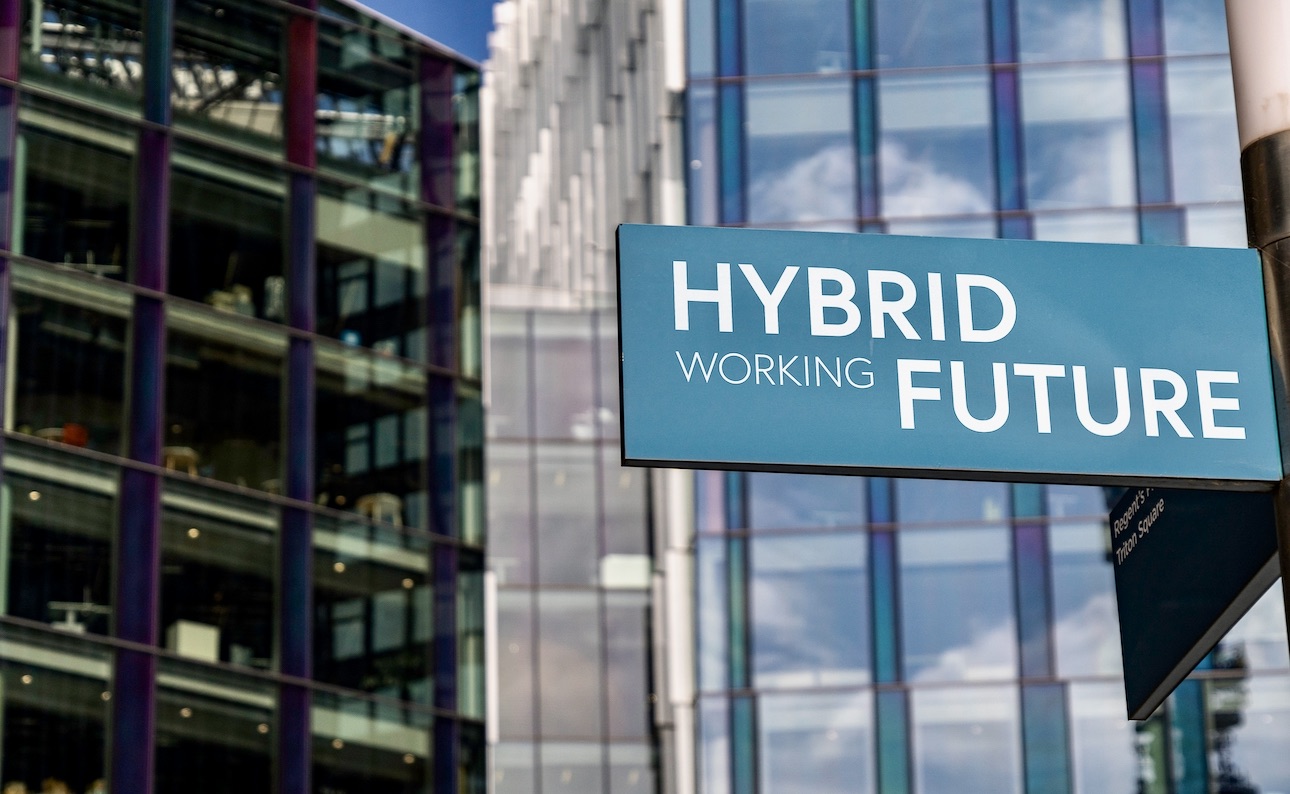
How Hybrid Working Works Out: New Research from Stanford University
With more people preferring hybrid working arrangements, everyone is asking, what is the current state of hybrid work?
And how can organizations navigate the benefits and challenges of a new hybrid/work-from-home culture?
Thankfully, experts are researching just that. Today we’ll look at some of the recent findings from Stanford Professor Nick Bloom, who has been studying working from home and hybrid work for years.
The current state of hybrid working
Pre-COVID, just 5% of US work days were worked from home. Now, that figure (after a huge rise during COVID-19 lockdowns) has settled back down at around 30%.
Globally, workers typically spend one or more days each week working from home.
Bloom expects these types of working arrangements to continue. Planned post-COVID working patterns in the US see workers split:
- Fully on site: 55.6%
- Hybrid: 29%
- Fully WFH: 15.4%
It’s worth noting that professional, graduate and specialized roles tend to fall into the hybrid and fully WFH camps, with front-line, non-graduate, and lower-paid employees making up the majority of the on-site cohort.
The benefits of WFH and hybrid working according to experts
So what are work-from-home experts saying about hybrid working? What benefits does it provide for a business and its employees?
Improved productivity
Research shows that a hybrid WFH model increases productivity by around 5% compared to traditional, fully on-site work.
Bloom also sees this statistic improving as businesses work to implement systems and strategies that support home-working employees.
It’s what employees want
Employees are largely supportive of WFH arrangements and enjoy various benefits.
Workers save time during a WFH workday because they don’t have to commute. They can then spend this extra time with friends and family or enjoy hobbies.
Home working offers flexibility, enabling employees to fit work more easily around other responsibilities. Getting to work in a quiet space, without distractions, is also cited as a key benefit. Workers can often concentrate better when they’re away from the busy office environment.
Reduced staff turnover
Giving employees what they want is clearly good for staff retention.
A study of 1,612 engineering, marketing, and finance professionals at Trip.com found that WFH reduced quit rates by 35%.
Perhaps this is because employees value hybrid work arrangements as highly as a 10% pay rise.
Keeping your best talent on board — and attracting new employees to your business — is no longer just about the paycheck. Which is great news if you’re working on a tight budget.
Encourages a more diverse workforce
If you’re looking to improve the diversity of your workforce (and if you’re not, you should be), hybrid working can help here too.
Bloom’s research found that women and racial minorities are slightly more likely than their white male counterparts to value a hybrid work culture.
It’s worth pointing out that there is strong support for hybrid working across the board. But it appears that underrepresented groups stand to gain the most from this model.
The challenges of WFH and hybrid working according to experts
So we’ve covered the benefits. Now, let’s look at businesses’ challenges when trying to implement work-from-home and hybrid work arrangements.
Here’s what the hybrid experts had to say.
Managing and meeting employee expectations
There are a number of reasons employees enjoy coming into the office.
- Face-to-face collaboration
- A clearer division between work and personal life
- Face time with a manager
- Socializing with colleagues
- Better equipment
- Quiet
Facilitating the social aspects of the office is vital for employers.
That might mean promoting in-person meetings, events, coffee, training, and lunches on days when colleagues are in the office together — and scheduling Zoom meetings and individual tasks on WFH days.
However, employees seem to want the best of both worlds:
- 69.9% say they want to choose their own days to WFH
- 75.6% say they want to be in the office on the same day as colleagues
This presents a problem for employers. Do they dictate WFH days to aid collaboration? Or do they offer employees more flexibility?
The day makes a difference
Bloom says that organization and consistency are essential for hybrid work model success.
That means structuring the week, ensuring that teams of people are in the office on the same days, while also balancing employee freedom of choice.
This may look different for different teams and organizations. But according to research, and perhaps unsurprisingly, the majority of employees show a strong preference for WFH on Mondays and Fridays.
Based on these findings, employers may choose to ask team members to work on-site for the same two or three days per week, Tuesday to Thursday.
Bloom also recommends that employees who have been with a company for a year or less spend an extra day each week in the office.
The desire for social distancing
Collaboration is important. But for some employees, the prospect of entering the office alongside all of their colleagues is still daunting.
According to Bloom’s research, between 10% and 20% of people are still concerned about the risk posed by COVID-19 and are actively socially distancing.
A busy office environment will clearly not work for employees keen to limit their exposure to the virus.
In these instances, employers may have to accommodate full WFH schedules — or rethink the office environment to make it a safer and more welcoming place for certain groups.
How technology is making this new state of hybrid work possible
In response to unprecedented demand, there are many tech tools designed to support WFH and hybrid working models.
Scheduling software, better AV capabilities, virtual reality, eLearning solutions, and even holograms are all transforming how we work.
These technologies are helping bridge the gap between home working and office environments, bringing colleagues together even when they’re apart.
And Bloom predicts that they will continue to be a key part of hybrid work strategies over the months and years to come.
Here at Smartway2, we’re building out the essential technology infrastructure needed for the modern hybrid workplace. Request a demo to find out more.


